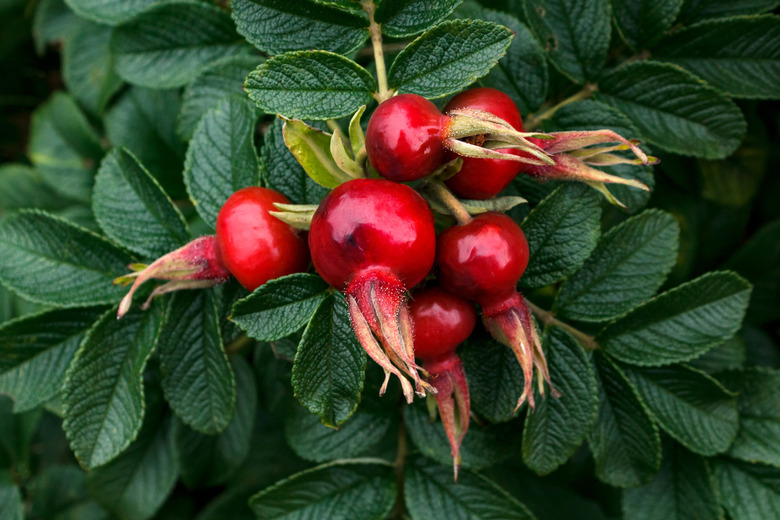How To Grow A Rose From A Rose Hip
While you can try to grow roses from seed, or rose hips as they are called, it is a painstaking task and may not result in a desirable rose. Some growers find the journey exciting, however, because there is always the possibility of developing a desirable new variety.
Not all rose bushes (Rosa spp., USDA zones 5 to 9, depending on variety) grow rose hips, and the seeds from hip-producing roses are unlikely to resemble the parent plant. Unless growers are specifically hybridizing roses to test and develop new varieties, horticulturists and other experts propagate roses from cuttings rather than from the fruit of the rose for several reasons.
Why Propagate Roses From Cuttings
Most types of roses are propagated from cuttings. Most growers graft the cutting onto a desirable rootstock, but some growers, such as Heirloom Roses, root the cuttings themselves so the rose grows on its own roots.
The University of Idaho Extension reports that grafted roses are not only more economical to produce, but they also allow growers to choose a rootstock that is resistant to certain diseases or more amenable to particular growing conditions, while still being able to offer a wide variety of roses themselves.
The downside to grafted roses is that if the graft dies or fails, the rose reverts to the rootstock, which is usually not a desirable variety. Furthermore, grafted roses usually live only about 15 years, while own-root roses can live many decades.
Propagating Roses From Hips
**Growing a rose plant from hips is possible, but it requires time, patience, and the acceptance that the rose may not result in a variety you want.** You may have roses in your garden that produce hips already, but if not, you can explore varieties that do.
Tip
Don't deadhead your roses if you intend to harvest the hips.
Heirloom Roses maintains a list of roses it sells that produce hips, including a wide range of species, landscape, rambling, climbers and rugosa roses.
Harvest Rose Hips
**Cut the rose hips off the plant when they are ripe, usually at about four months old.** Note that some hips may be red, yellow or orange, but some may remain green even when ripe.
Slice the seed pods in half and use a spoon or knife to dig out the seeds. Discard the pulp.
Prepare the Rose Hip Seeds
First, clean the pulp from the seeds. The Santa Clarita Valley Rose Society recommends first rinsing the seed in a solution of bottled water and 5 percent bleach, then rinsing it in fresh water to remove the bleach, and then soaking the seeds in a 3 percent peroxide solution for 24 hours. This aids in the removal of the pulp.
Spread the seeds on a paper towel and scrub them with a brush.
Warning
Do not mix bleach and peroxide in a single solution.
**Rose seeds need to be stratified to improve germination.** This means keeping them in a cold environment, such as a refrigerator, to simulate dormancy. The recommended timing varies from six weeks to four months.
Put them in a clean, damp paper towel or cheesecloth inside a plastic bag and pop them in the fridge. Make sure they don't freeze and don't let them dry out.
After stratification, put the seeds in a bowl of water and discard any seeds that float; they are likely not viable.
Plant the Seeds
In early spring, after all danger of frost has passed, fill a container that has good drainage with a sterile mix of potting soil and vermiculite. Plant the seeds about 1/2 inch deep.
Place the container in full sun and maintain regular moisture. Seedlings should emerge in about six weeks. When they outgrow their initial pot, transplant them to larger pots or directly into the garden.
Be aware that they may take a few years before developing into a rose bush and producing rose flowers that you can evaluate.
Other Uses for Rose Hips
You can use rose hips in ways other than for propagation. Rose hips are a highly concentrated source of antioxidants, including vitamin C. They are used medicinally to stimulate the immune system or strengthen the heart and vascular system.
Can you eat rose hips from any rose bush?
**All rose hips are edible, but some taste better than others.** Fresh hips can be tart or sweet, depending on the variety. Boil them to make syrups or jellies, or use rose hips to make honey. Dried rose hips can be used to make rose hip tea.
References
- Mississippi State University Extension Service: Rose Propagation
- Heirloom Roses: Roses With Hips
- Santa Clarita Valley Rose Society: How to Grow Roses From Seed
- Heirloom Roses: Own-Root Roses
- University of Idaho Extension: Roses: Grafted vs. Own Root
- North Dakota State University: Rose Propagation
- University of Kansas American Indian Health and Diet Project: Rose Hips

